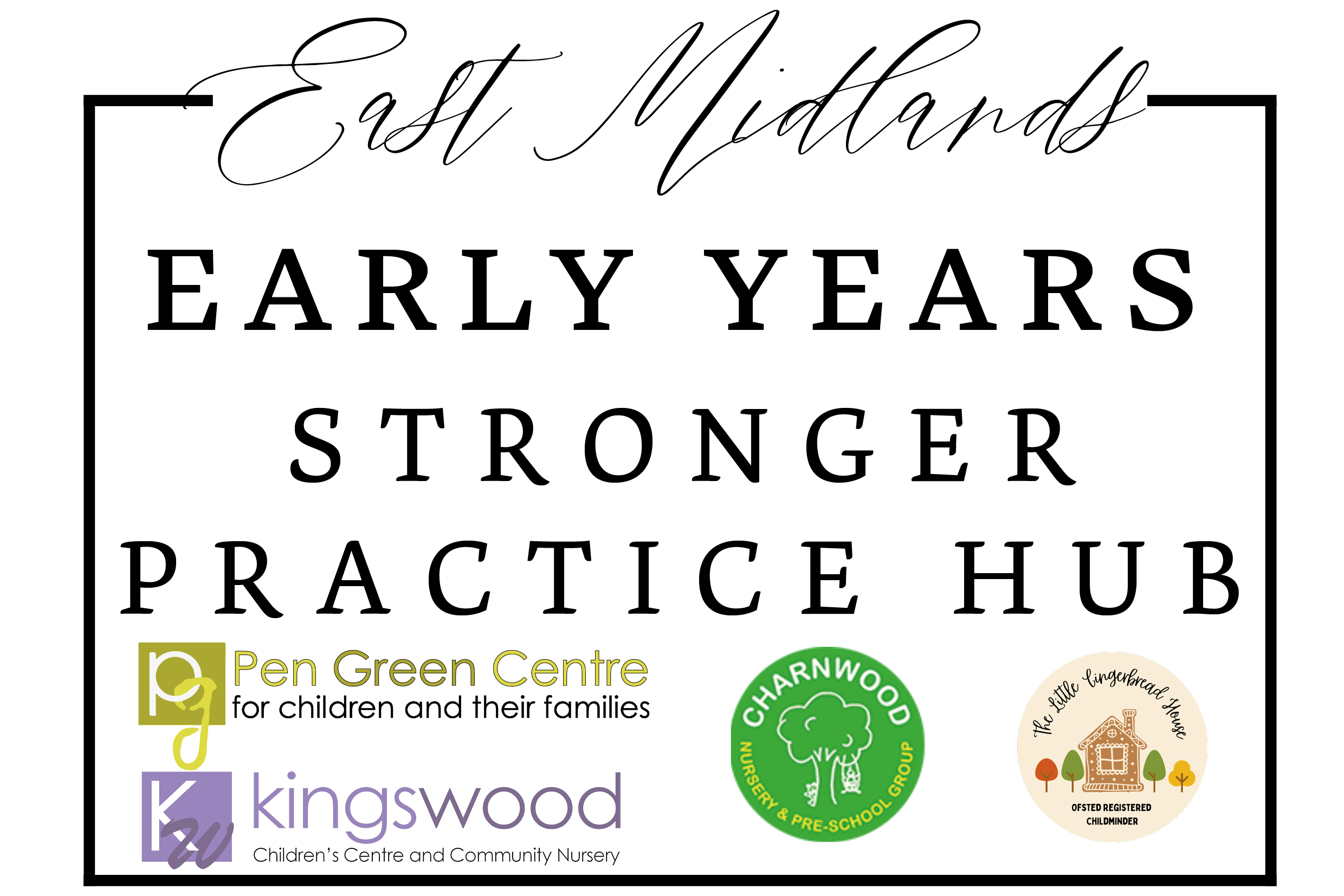Michelle Thompson has been an Ofsted Registered Childminder since 2010 and is based in Corby, Northamptonshire. In 2018 she completed the BA Hons Integrated Working with Children and Families at the Pen Green Research, Development and Training Base.
Research has shown that children who have poor vocabulary at two years old tend to do less well at school by the age of seven (Hart and Risely, 2003; Hindman et al, 2016). In recent years, I have seen a rise in children entering my setting with a speech and language delay. With waiting lists for speech and language therapy being long, it is a concern that these children could fall further behind.
Training Opportunity
The East Midlands Early Years Stronger Practice Hub and the Education Endowment Foundation worked together to fund access to Elklan’s Communication Friendly Home-Based Setting Programme as part of the Department of Education’s Early Years Recovery Programme. Funded places were open to schools, early years settings and childminders in North and West Northamptonshire, Leicestershire, Leicester, Rutland and Lincolnshire. When I came across the advert for this training, it sounded perfect, just what I needed to advance my skills and ensure I could support the development of children’s speech, language and communication.
Language Builders for 3-5s
There were two parts to the programme, the first being ‘Language Builders for 3-5s’. Through a series of weekly E-learning modules, each followed by a webinar, I was advised how to encourage the communication skills of children aged three to five.
The webinars were led by Beth, an independent speech therapist, and involved ten childminders. We were given the opportunity to discuss the E-learning and share ideas on how to incorporate them into our practice. We would try new strategies within our settings, then reflect upon their effectiveness the next week.
The second part of the programme was using a checklist to audit my setting with the aim of becoming an accredited Communication Friendly Home-based Setting. This involved the physical environment, resources, routines and the impact of my interactions with the children.
Impact of the programme
I became aware of my own language and began to consider what I was saying and how I could rephrase it to encourage communication. I realised that I had a terrible habit of turning everything into a closed question, “we went to the park today, didn’t we?”.
Elkan advises that you monitor the number of questions and instructions used, thinking about the quality and quantity (Elklan, 2019, p11). Sometimes it is better to say nothing and simply pause to allow the children time to think and respond. I found this strategy useful for quiet children or those reluctant to speak. Now, when sharing a book, I point to the pictures and give the child time to organise their thoughts, rather than jumping in with a question.
In week three, we discussed using visual strategies to support attention and talking. One child would often ask, “who is going home first?”. The Communication Friendly Home-Based Setting checklist asks if routines are clear and obvious to the children. This prompted me to create a ‘who is here today?’ visual. Upon arrival, the children place their photograph on the board, arranged in order of when they will be going home. This has been popular with all children and enhances their understanding of the day’s routine.
They loved seeing their photograph on the board and spoke about what they were doing in it. I now ask their parents to upload photos from home to their online diaries. Sharing them has become a wonderful prompt for conversations between the children.
When children start school, they are likely to be asked to sit on a carpet and listen, we did not practice this enough. We would sit together on the sofa and read stories, or sing rhymes but they were rarely engaged if I tried to get them to sit down for circle time. Learning about visual strategies to support attention, understanding and talking gave me the idea to create a song sack filled with props. This was a huge success, the children will happily sit in a circle, taking turns to choose an item from the sack to decide the next song.
Professional Development
I have listed a few of the changes that I have made as a result of taking part in the Elklan programme, but I could write about many more. Having trained at Pen Green, where you are encouraged to be a reflective practitioner, I thought this was something I was good at. However, furthering my knowledge of speech and language development has deepened my ability to reflect upon my practice.
Since the pandemic, I have been grateful for the rise in opportunities to undertake training. I am now participating in the Early Years Professional Development Programme. Childminding can be a lonely profession, but these courses have enabled me to network with early years practitioners and build a greater support network.
References
Elks, L, and McLachlan, H. (2019) Language Builders for 3-5s, Cornwall: Elklan.
Hart, B, and Riseley, T.R. (2003). The Early Catastrophe; The 30 Million Word Gap by Age 3, American Educator, Spring 2003.
Hindman, A., Wasik, B,. & Snell, E (2016). Closing the 30 Million Word Gap: Next Steps in Designing Research to Inform Practice. Child Development Perspectives, 10(2). 134-139.
